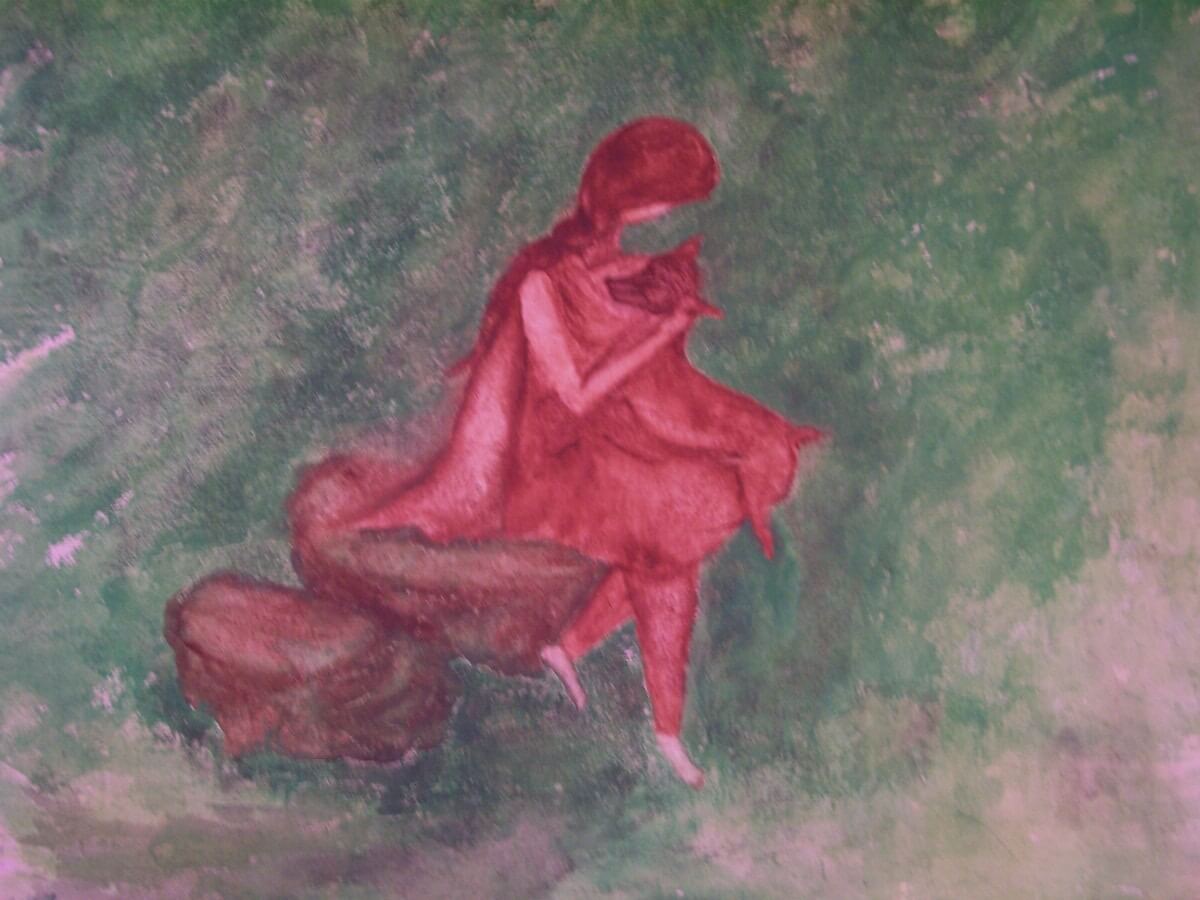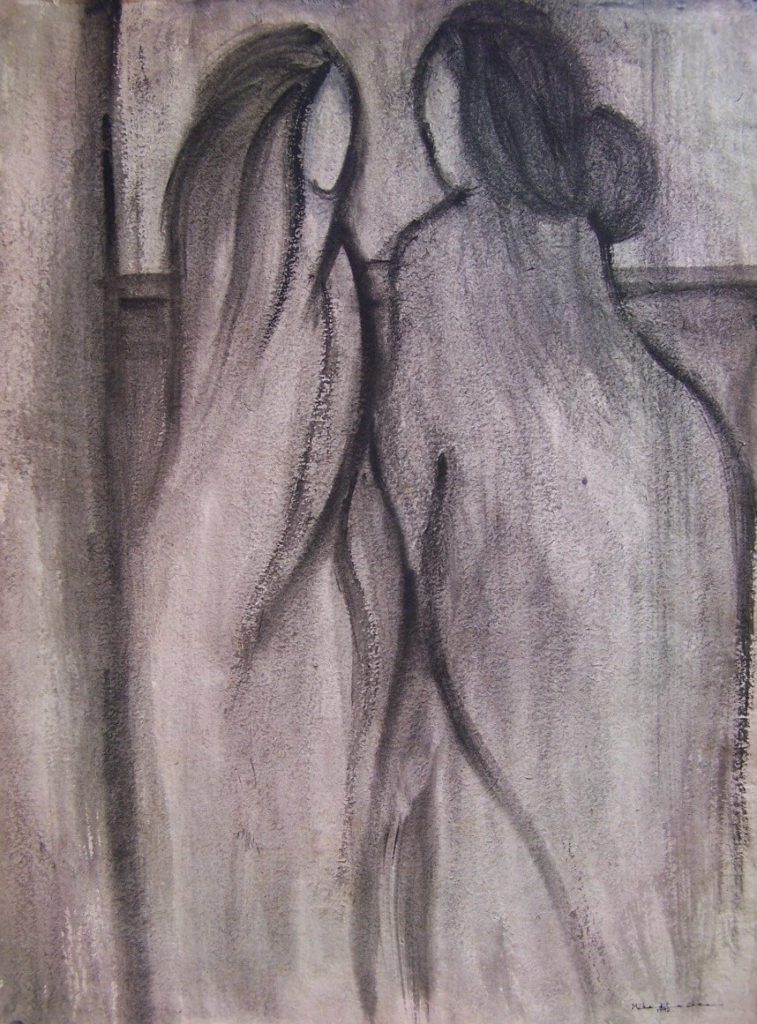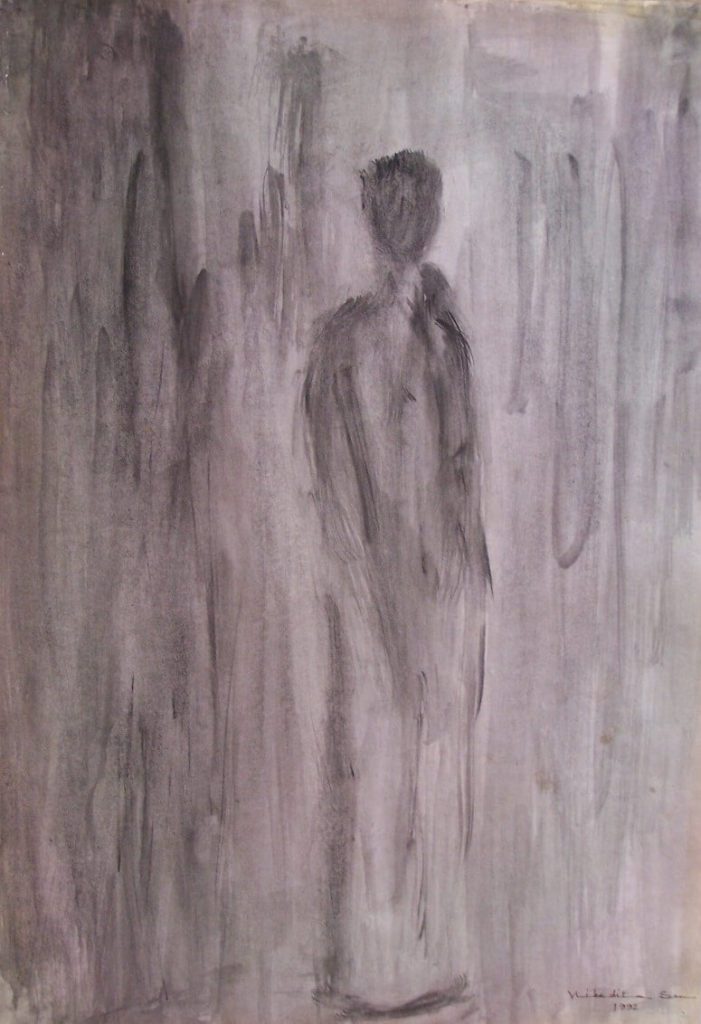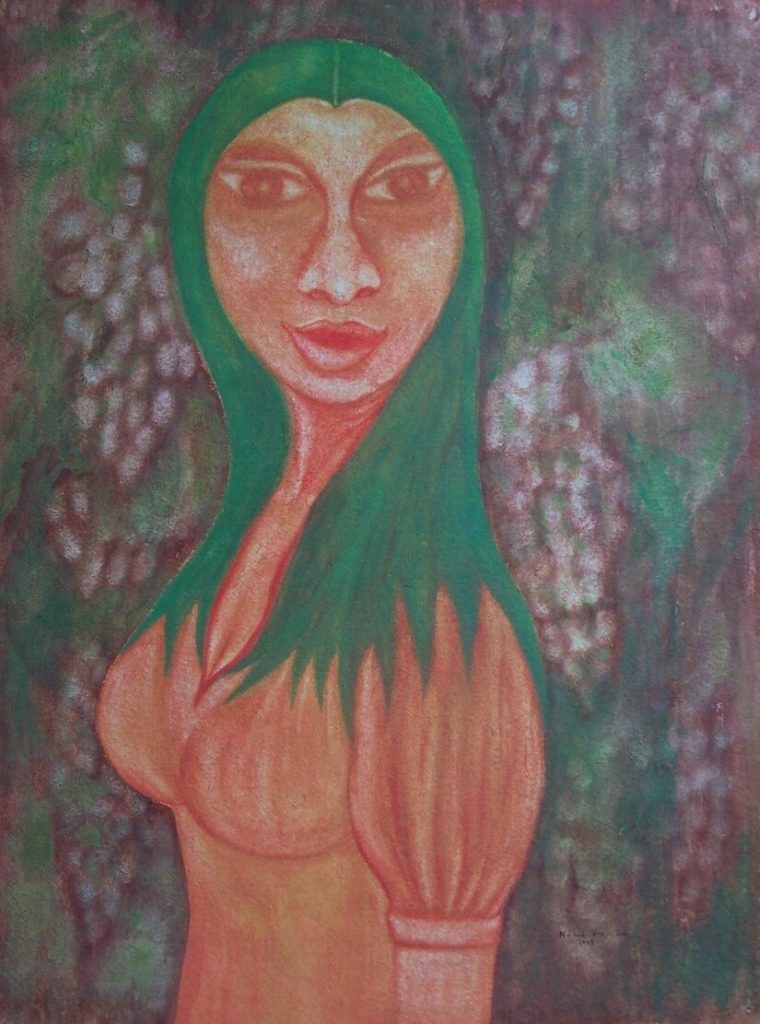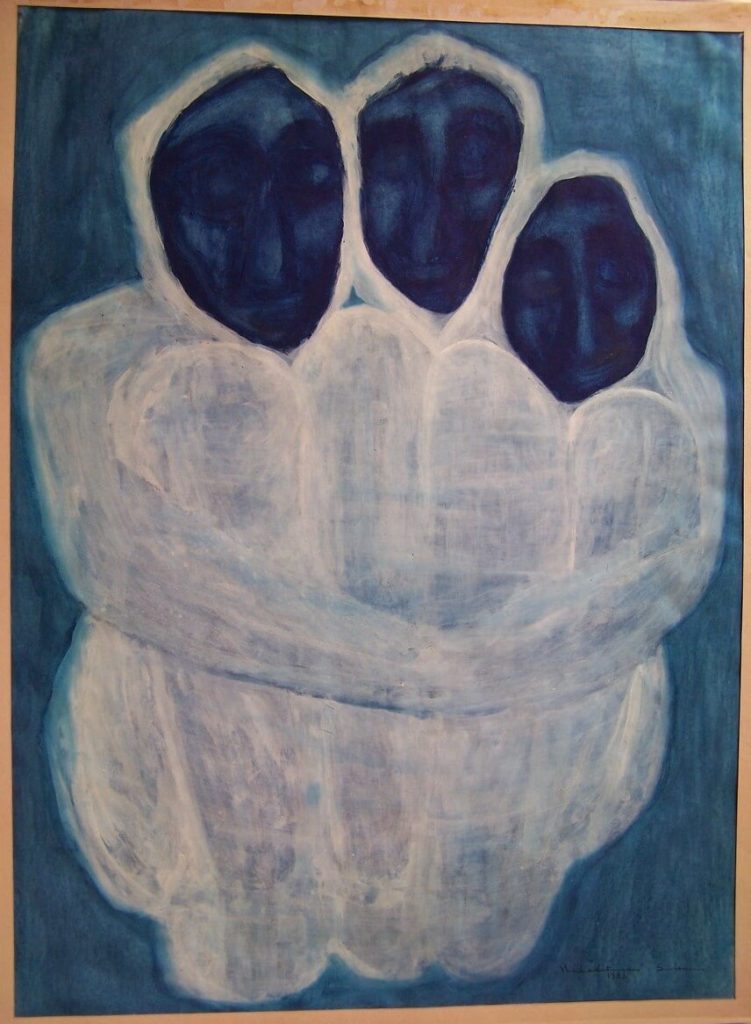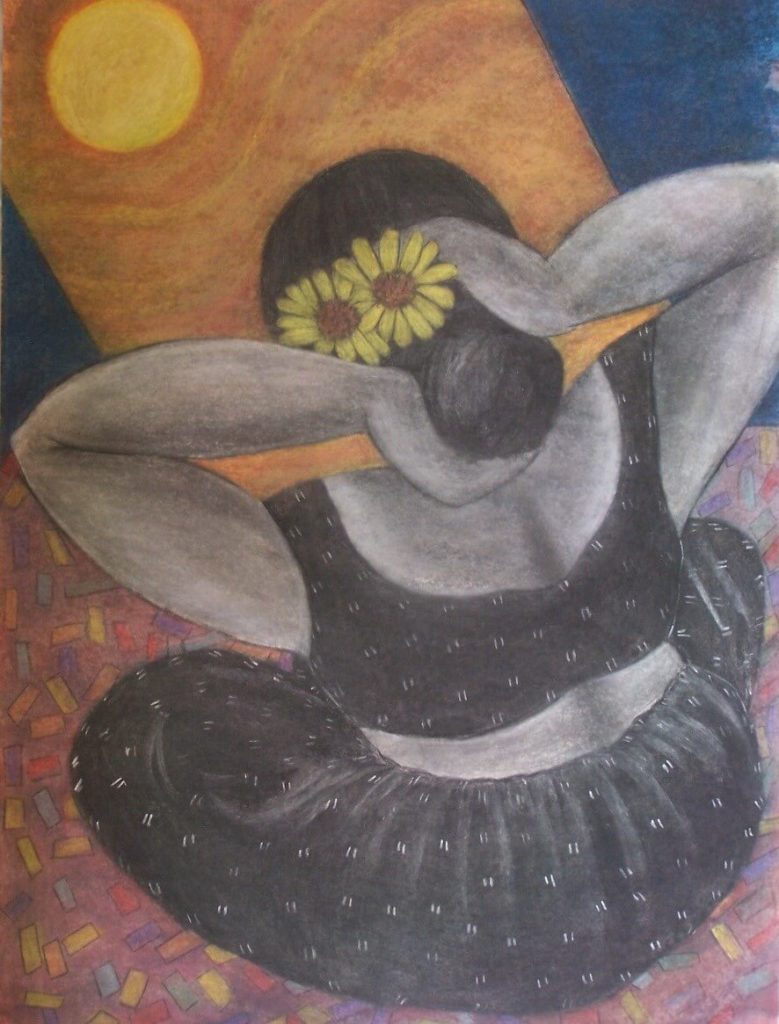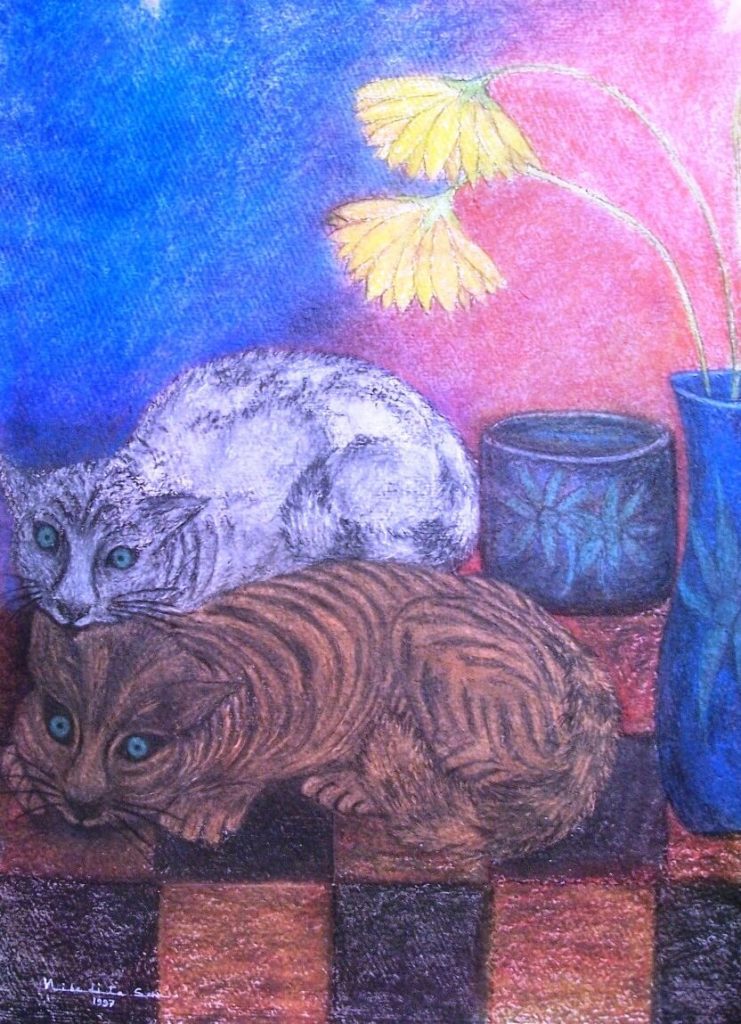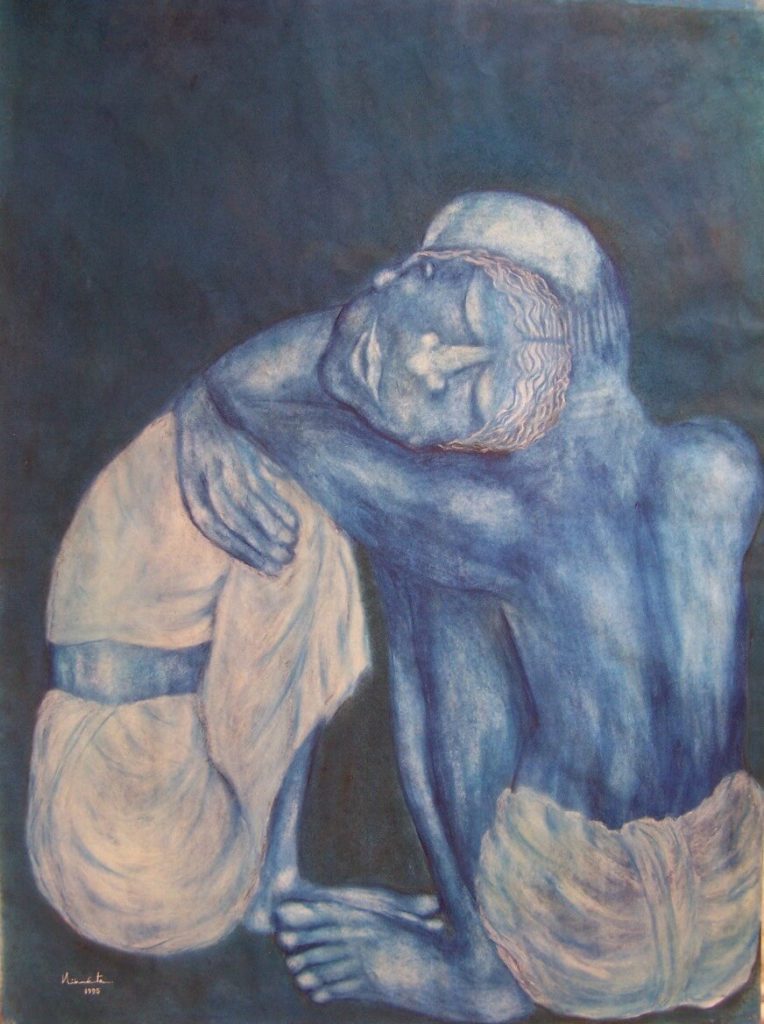Reading Time: 10 minutes
Nibedita, a renowned artist, reveals her journey, as an artist, from her childhood. In the first part of the three-part series, she tells us about the early phase of her career. We are republishing her story in Different Truths. It appeared in The Punch, on July 1, 2015.
I cannot remember when I started painting. It happened one day, some day. What I remember is seeing and observing my brother paint whenever he was idle or not so happy. His spontaneous landscapes, his exceptionally appropriate sketches fascinated me, and I wanted to be like him. He often gifted these works to many, including my friends, but wouldn’t let me touch them. I felt jealous and at that age the only thing I could do was play with his left-over colours and try to paint one for myself. That was probably the start. By the time I was seven, I was already known in my school for my paintings.
I was born in a family of wasted talents. My mother was a gifted dancer and a writer-choreographer but chose to be a doctor, professionally. I had seen her directing musicals when I was a little girl. My father was a very good singer, and his paintings still adorn my wall, but he was a policeman. And my artist brother, who inspired me all the way, took up marketing and sales as his profession. As for me, I did my post-graduation in English literature, but I consciously decided to stay hooked on paintbrushes and paint as my primary mode of expression.
Many say it runs in the blood. I agree yet I strongly believe that one needs to continuously hone whatever is latent inside one’s arcane core.
Lucid Softness of Watercolour
Watercolour and its lucid softness fascinated me. Moreover, I have always seen my brother using them, always. My early works were naïve and devoid of the contemporary idiom. Their themes were mostly lifted from something that was around me or something that I had read. At an earlier stage, my main influence was my mother. When it comes to aesthetics, she was my guru. She taught me how to write essays and read out poems by Wordsworth, Shelley, and Tagore.
Shakuntala is one of my earliest works. It is done in watercolour and surely expresses a flawless idyllic ambience, inside and outside.
The early nineties’ Calcutta was approachable and friendly. The film festivals opened new vistas.
While studying English Literature, I often felt a strong urge to paint, but my ongoing studies wouldn’t let me. The early nineties’ Calcutta was approachable and friendly. The film festivals opened new vistas. My introduction to World Cinema changed my existing perspective. I was a small-town girl wandering around and greedily gathering every other wonder!
Bertolucci’s films had elaborate frames and sensuous colours! I was fascinated. I watched Zanussi, Kieslowski, and Polanski with bated breath. Was moved by Kieslowski’s “three colours: Blue”. It has remained with me ever since. Truffaut and Ray’s black and whites left me wondering as to how just the two colours could create extremely colourful stories. Many of my black-white works are reflections of that wonder!

Gossip 
Me and myself
These two are subtle impressionistic watercolour works. Took me barely ten minutes to do them. There is no second stroke or linking lines anywhere. Totally instinctive without a hint of deliberation!
Kharagpur & Calcutta
We lived in a small, yet extremely cosmopolitan town called Kharagpur, a hundred and twenty kilometres from Calcutta. It wasn’t an easy distance to cover every day. I spent eight hours to and fro, each day, to go to my college and university in Calcutta. Not only this distance, but I also literally swam across a huge crowd at Howrah Station, where I got off the train every day, and took a bus to reach my destination.
My eyes floated over a sea of faces with multi-plural expressions and as I journeyed into the nuances of these expressions…
My eyes floated over a sea of faces with multi-plural expressions and as I journeyed into the nuances of these expressions, I journeyed into myriads of ideas, concepts and ways that were behind each facade. Trains, platforms, railway stations and waiting rooms became part of my everyday life and I witnessed time unfolding in various ways.
It was a continuous learning process within, as I watched faces wrapped in wonder, pain, love, hope, fun, disillusionment, all at one go while waiting for a train or while in a train, and my urge to give forms to these experiences intensified. Some days were tough, yet they were no less interesting. Delayed trains, crowded platforms, buzzing waiting-lounges, tired faces, sleepy eyes, restless mothers, cranky children, impatient fathers, ladies young and old seeking security, men showing concern …. all rolled up into one continuous story called ‘life’.
My Refuge
Crowd seemed to be my refuge at one point of time. I had lost my father by then. The home to which I was extremely attached, the home that once vibrated with laughter, was no more the same.
That was when I realised a crowd has no face, no identity, therefore has no crisis.
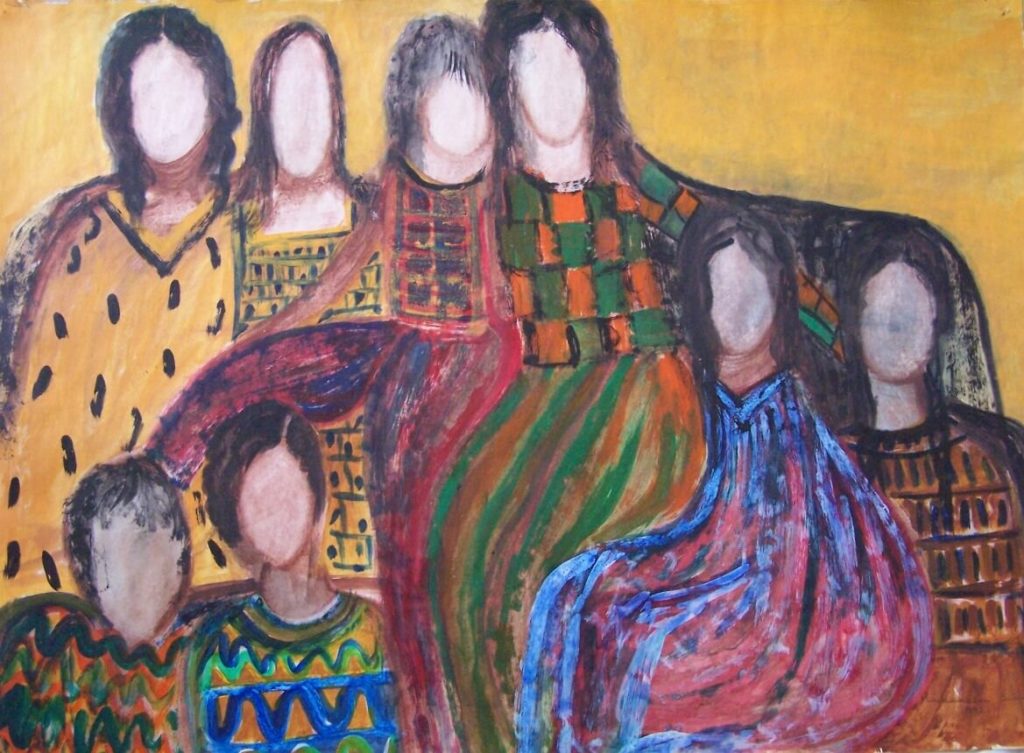
I somehow wanted to merge with the crowd and get lost in its tide. That was when I realised a crowd has no face, no identity, therefore has no crisis.
My painting “Facing the Camera” is a painting that was inspired by this realisation. This was my first Acrylic on paper, and I hardly knew how to use this medium, but managed somehow. Surely there is an element of anarchy in the whole of it, which reflects the abyss inside.
Staying away from home for most part of the day was a relief, but nevertheless I pined to be home at the fall of the day. My mother was absolutely distraught after my father’s death. So, I refused to stay in the college hostel in Calcutta. Instead, I preferred to take the long journey back, every day.
My Parents
I missed my father so much that my whole being became totally dependent on my mother, who I thought would never ever die. I often painted till late in the night and as a result had to miss classes on days that followed. Faces surfaced on canvases. Initially I did figures from my everyday encounter.
Keats was a big influence, so was Samuel Beckett ….
My works titled ‘Mellow Autumn’ and ‘Waiting for Godot’ are both inspired by them.
My works titled ‘Mellow Autumn’ and ‘Waiting for Godot’ are both inspired by them. If I have to speak about the two, Mellow Autumn done in opaque watercolour is my first expressionistic work and Waiting for Godot in mixed media is one of my early impressionistic paintings.
My father had lost his secured central government job during the Emergency Period for something as trivial as a refusal to move to a new posting along with a career lift. We had just moved to Kharagpur from Calcutta, that year. One evening my father came in with a blank-smile and announced that he was fired because he had sent in a protest letter against his new posting in a remote Mofussil.

Mellow Autumn 
Waiting for Godot
A Battle
Life took a sudden turn. All of us had to condition our thoughts and ways according to the resources available to us. It was a battle both inside and outside.
Blue came along. Blue, the colour of the sky and the concept of vastness associated with it…
Blue came along. Blue, the colour of the sky and the concept of vastness associated with it, remained with me as I grew up internalising everything that came my way.
Born in Calcutta, I was witness to the Seventies’ intolerance and strife. Though I was in my early years, yet the entire Seventies’ era haunts me. Most of my work bears hints of the deep-rooted morbidity that left me spellbound even at that tender age.
We had a huge photo of my father in his full khaki uniform mounted up on the wall opposite to the entrance door. That was because during the Seventies, houses were searched randomly for Naxalites and that photo was meant to spare us the searches.
Two of my cousins were beaten up, their bones broken into pieces.
We always had a full house during those days. Two of my cousins were beaten up, their bones broken into pieces. Young cousins, and uncles, many of whom I didn’t even know stayed with us for months on. Ours was a police-officer’s house, a secure shelter. There were times when we were woken up by the distinct sound of bullet shots at midnight. A hoarse voice would yell at us and warn us not to peep out of our windows! We heard death-screams that shattered the still night … nights.
The sun rose like any other day.
Shelter for Young Boys
Our staircase niche was a shelter for many young boys. I heard them whistle and sing in chorus. My mother gave them food and sometimes they would stand at the door with some wheat flour requesting my mother to make some chapatis for them. I wondered who they could be! Mother told me they were sons of mothers like her. I did not understand much.
Those unforgettable Calcutta nights and Calcutta days!
‘Fossils’ is as spontaneous as any instinct could be. I have no clue where it came from, but an afterthought does make me ponder on my early childhood days in Calcutta when I listened to regular discussions of bloodshed and killings everywhere.
This painting surely has sub-layers to it. Behind the blue watercolour there is distortion…
This painting surely has sub-layers to it. Behind the blue watercolour there is distortion, which justifies its purpose.
Kharagpur, in West Bengal, where we lived for the next two decades was the place that truly shaped up my understanding about growing up. It was my ideal childhood! A red Railway bungalow, not far from the railway station, tucked up in the middle of a sprawling lawn with the smell of shirish and shiuli spreading out a springtime spell.
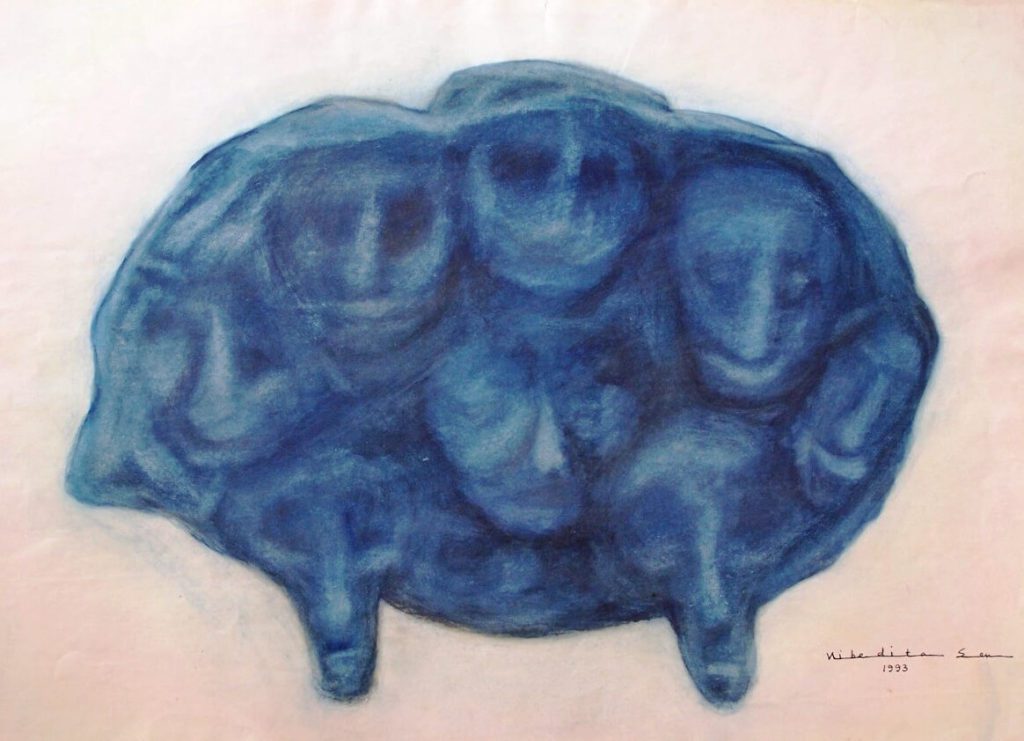
Sun Swept Bed
A sun swept bed had that certain kind of warmth, I still feel it all over. How I loved the bedside window with a broken glass! It let my cats in and out any time they wanted to and let the moon wink at me throughout my adolescence. That was the time when evenings quickly cast a huge emerald shadow over our lush green lawn. My parents sat down together over a brewing pot of tea, my brothers playing carom or tuning the guitar for a brand-new song.
What is the taste of peace like? No extra light to blur out the essential content of darkness…
What is the taste of peace like? No extra light to blur out the essential content of darkness, the occasional tring-tring of the bi-cycle gong announcing homecoming, or the coo-coo of a lonely Koel on a Baishakh afternoon …. That tasted like peace.
That was the time when all of us huddled together and watched the magic of Maradona with our mother worrying about missing a good night’s sleep, or missing school and unit tests. Amidst everything, a figure with smiling eyes, in khaki uniform, made us feel secure and safe. His double revolver made him look like a hero and later we all understood that he really was one. My home, sure that was.
Love: A Spiritual Concept
‘Harmony in Blues’ , a monochrome, I made for my mother was nothing more than what I felt about the relationship between my parents. An old couple in deep physical embrace, but the whole language defies matter and defines love as a spiritual concept.
After my father, the four of us lived on, but it wasn’t the same anymore.
After my father, the four of us lived on, but it wasn’t the same anymore. My brothers were already working, and living was smooth but reconciling with the untimely death of a robust and vigorous man was extremely difficult, especially for my mother. His was a constant battle inside that finally killed him…. although the battle in the courtroom was won! The brooding shadow of helplessness wouldn’t let her sleep. And I realised that what I had thought to be an unmixed peace was a lull ….

Dusk 
Cats 
Harmony in Blue
I started using dry pastels in mid-nineties’. I loved the way the colours blended with each other. But I did not know how to fix the colour permanently, which I learnt later through trial and error. Some of my favourite works are in dry pastels.
‘Cats’,and‘Dusk’are both done in dry pastels, in Calcutta, shortly after we left Kharagpur. Cats, a tribute to all my cats, who I lost in transit! They refused to come along with us to Calcutta. They just disappeared as we started packing the necessary stuff…. not to be seen till we left.
Dusk depicts the harmonious mood shared between dusk and Indian ladies getting routinely ready to welcome their husbands’ home after their day’s work.
Everything Impermanent
That everything is impermanent is what I shudder about. I am unable to deal with such essential truths. Be it a bottle of perfume or a relationship, I look forward to a renewal, a replenishment of everything that exists. Over the years the material things seem to breathe and grow along with me. Whether I animate them or they inanimate me is a big question, but my belongings and I do share a common living space, or life, as I understand it. We almost gave up Kharagpur, our blissful abode except for our initial occasional visits, which slowly fell through within a year.
A prolonged nightmare about my bereft home wouldn’t let me be in peace for years. The passing on of my father and after him my mother made everything go topsy-turvy.
I lost my foothold. I lost my childhood forever.
I lost my foothold. I lost my childhood forever. That my father died fighting for his rights and my mother followed him were the two facts that ruled my life and overtook all my actions and I consciously refused to move on in life.
Our home in Kharagpur slowly vanished. The material things associated with my childhood just got eaten away by time. The teak-beds and sofas, almirahs and refrigerators, cutlery and crockery, curtains and bedsheets all evaporated into the thin air. No one lived there after my father and mother were dead. All my acquisitions, including my cats, my collection of rocks, shells, leaves, twigs, cotton fluffs, a variety of seeds, feathers, dolls and all the precious letters from friends and folks were gone. No one knew where.
It took time to recover these material things once again. That was possible only through a magic called regeneration and that happened internally, after many long years of self-reconstruction.
In 1997, I collected whatever paintings I could and had a solo exhibition titled ‘Mood Pieces’ in Calcutta Information Centre, Gallery Gaganendra.
Republished with permission of The Punch. My Journey: Seeing Inside (thepunchmagazine.com)
(To be continued)
Paintings by the author

